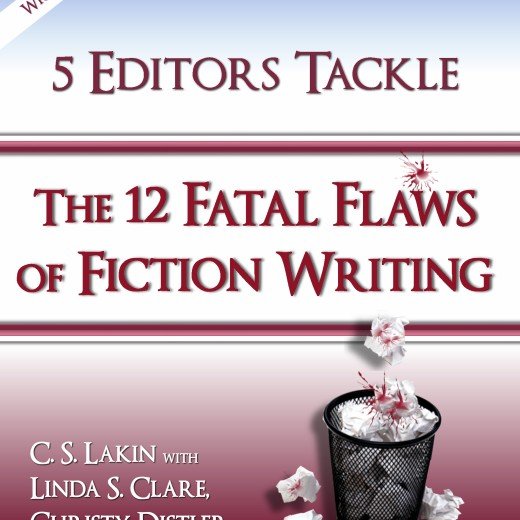Creating Tension at the Micro Level by C. S. Lakin
 Please welcome guest writer, C. S. Lakin, who shares about how to create tension in your fiction. Enjoy!
Please welcome guest writer, C. S. Lakin, who shares about how to create tension in your fiction. Enjoy!
***
Tension is created by lack. Lack of understanding, lack of closure, lack of equilibrium or peace. When your readers have questions, that creates tension. When they need to know what happens next, that is tension.
Masterful writers keep their readers in a constant state of tension. And that’s a good thing.
But here’s something to keep in mind: our characters may be tense, but that doesn’t mean readers are tense in response. A character with a tightened fist or clenched jaw does not ensure readers will respond in the same way. And that might not even be the desired response a writer is hoping for.
What the characters think, feel, and show must be carefully executed to evoke the desired emotional response in readers.
The tension we writers want to focus on most is the tension our readers feel. If we don’t keep them in a state of expectation, they’ll start nodding off, and next thing you know, our novel slips unread to the floor.
Tension on Every Page
That means getting tension on every page. How is that possible?
By focusing on microtension.
Just what is microtension? Just as the prefix suggests, it’s tension on a micro level, or in small, barely noticeable increments. Your big plot twists and reversals and surprises are macro-tension items. And those have great potential for sparking emotional response in readers. But microtension is achieved on a line-by-line basis.
Microtension is…
For example, anytime a character has conflicting feelings, you have microtension. Microtension can be small, simmering, subtext, subtle. Even the choice of words or the turn of a phrase can produce microtension by its freshness or unexpected usage.
Microtension is created by the element of surprise. When readers are surprised by the action in the scene, the reaction of characters, or their own emotional reactions, that is successful microtension at work.
A sudden change in emotion can create tension. A character struggling between two opposite emotions creates tension. Odd contradictory emotions and reactions can create microtension.
Microtension is created when things feel off, feel contradictory, seem puzzling.
Maybe that sounds crazy, but if characters are sitting around happy with nothing bothering them, you have a boring scene that readers will stop reading. Sure, at the end of your book, you might have that wonderful happy moment when it’s all wrapped up and the future, finally, looks bright, but that’s why the book ends there.
Use Inner Conflict to Create Microtension
At any given moment, we are feeling a number of different emotions, and they often clash. By going deep into your characters and drawing out that type of inner conflict as often as possible, you can bring microtension into your scenes. Yes, you will have outer conflict as well (hopefully a lot of it). But by adding the inner conflict, you can ramp up the microtension.
Strive for the unexpected
Try to avoid common expressions we’ve all heard before. Think past the obvious first emotion and find something deeper, something submerged and underlying the superficial emotion. Strive for the unexpected.
Ramp up the Tension: 3 Ways to Add Microtension
Here are three areas and ways you can add microtension to your scenes:
#1 Dialogue:
Examine each line of dialogue. Take out boring and unnecessary words and trivial matters. Go for clever. Find a way to give each speaker a unique voice and style of speaking.
Subtext can hint at what characters are really feeling below the surface, and that creates mystery.
Keep in mind the tension is in the relationship between the characters speaking, not in the information presented.
#2 Action:
This can be with any kind of action—high or low. Even a gesture is action. So think how to make an action incongruous. What does that mean?
Real people are conflicted all the time. Real people are complex, inconsistent.
So by having a character react in an incongruent manner, and having incongruent developments in the storyline, will add microtension.
Have things happen and characters react in ways the reader does not expect. And, most importantly, show everything through the POV character’s emotions.
Action will not be tense unless the character is experiencing it and emotionally reacting to it.
#3 Exposition:
Exposition is the prose, your writing. It is the way you explain what is happening as you show it. It includes internal monologue.
Find ways to add those conflicted emotions and create dissonance. Show ideas at war with one another. Use word choices that feel contradictory. Find fresh, different ways to describe common things.
Universal Feelings Resonate
Remember, when you tap into universal feelings—human experiences many share—the thoughts and actions of a character will resonate. And when something resonates, such as in music when a sound wave causes a string to vibrate, it elicits a response.
The emotions readers feel when an author is a master at microtension are intrigue, curiosity, excitement, fascination, unease, and dread.
In other words, when you sense something coming around the corner and you don’t know what it is, it triggers emotions. Depending on the story and genre, those might be fear, anguish, giddiness, mirth, terror, or titillation.
If a writer masterfully creates microtension, she is going to get readers committed to her story and her characters, feeling tense all the way to the last line of the novel.
Want to learn how to become a masterful wielder of emotion in your fiction?
Enroll in Lakin’s new online video course, Emotional Mastery for Fiction Writers, before September 1st, and get half off using this link!
***
ABOUT THE AUTHOR
 C. S. Lakin is an editor, award-winning blogger, and author of twenty novels and the Writer’s Toolbox series of instructional books for novelists. She edits and critiques more than 200 manuscripts a year and teaches workshops and boot camps to help writers craft masterful novels.
C. S. Lakin is an editor, award-winning blogger, and author of twenty novels and the Writer’s Toolbox series of instructional books for novelists. She edits and critiques more than 200 manuscripts a year and teaches workshops and boot camps to help writers craft masterful novels.








This is a great article. I just wish I could see examples of what you mean with writing clever dialogue, hinting at the subtext and writing that properly. It would be nice to see an example of the incongruous actions — different from what the POV character is thinking. Like you said, finding fresh, different ways to describe common things is the real trick. I would love to take your course, but am unable to at this point. Thanks for your words. I’ll work on them.
Hi Carol, my online course has more than 6 hours of instruction on this, including the examination and analysis of three dozen full passages. In a blog post, there isn’t space to teach to the depth needed. But I hope you will check out the course (half off if you enroll this month). The link is at the bottom of the post. Thanks!